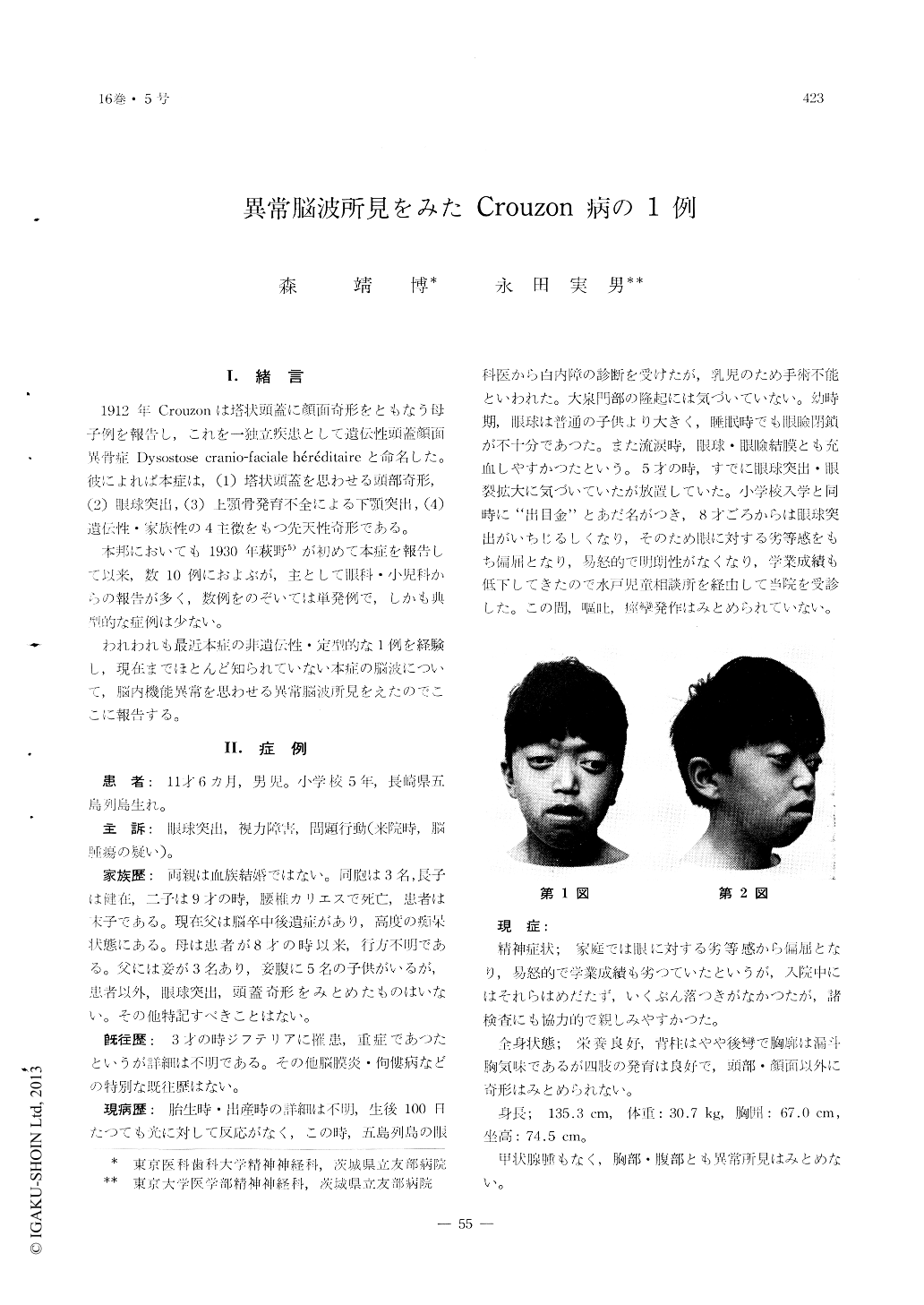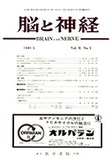Japanese
English
- 有料閲覧
- Abstract 文献概要
- 1ページ目 Look Inside
I.緒言
1912年Crouzonは塔状頭蓋に顔面奇形をともなう母子例を報告し,これを一独立疾患として遺伝性頭蓋顔面異骨症Dysostose cranio-faciale héréditaireと命名した。彼によれば本症は,(1)塔状頭維を思わせる頭部奇形,(2)眼球突出,(3)上顎骨発育不全による下顎突出,(4)遺伝性・家族性の4主徴をもつ先天性奇形である。
本邦においても1930年萩野5)が初めて本症を報告して以来,数10例におよぶが,主として眼科・小児科からの報告が多く,数例をのぞいては単発例で,しかも典型的な症例は少ない。
A case of typical Crouzon's disease with a abnor-mal EEG finding was reported. He complained of marked bilateral exophthalmus and left strabismus divergens. He had a facial distortion with a saddle nose and a prognathous lower jaw, because of his undeveloped maxilla. His skull is hypsicephalic, hyperbrachycephalic and oxycephalic with Larsen's protuberance. By an X-ray examination, there were evidenced a thinning of the cranial bones with marked digitation and prematurely closed sutures coronalis.
The EEC report of Crouzon's disease was rare but this case had a remarkable abnormal finding. The basic rhythm was characterized by moderate voltage irregular 8 to 10 per second activity in all leads, which was frequently interspersed with a short run of high voltage 6 to 8 per second slow waves confined to the frontal lead. Such a paroxy-small dysrhythmia was observed to be dominant on the right side. During hyperventilation the paroxy-smal slow waves were markedly exaggerated within the frontal areas and at the sleeping record EEG shows normal sleep record and no specific seizure pattern.

Copyright © 1964, Igaku-Shoin Ltd. All rights reserved.


